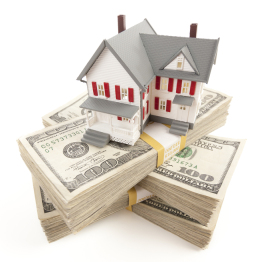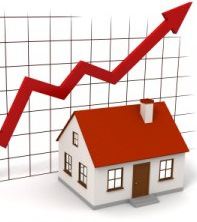South Bay Vision – Market Update
Blog, Buying, Market Minutes, Market Updates, Real Estate News, Selling | Dunham Stewart The California Association of Realtors released their report on California existing home sales and median prices in July. The statewide median price rose over the 12 months ending in July by 7.1% to $464,750. Although June marked the end of the 23 months of double-digit prices increases, the median single-family home price in California has now risen on a year-over-year basis for 29 months.
The California Association of Realtors released their report on California existing home sales and median prices in July. The statewide median price rose over the 12 months ending in July by 7.1% to $464,750. Although June marked the end of the 23 months of double-digit prices increases, the median single-family home price in California has now risen on a year-over-year basis for 29 months.
“Home prices continued to march higher across much of the U.S. in July. Most states are reaching price levels not seen since the boom year of 2006,” said Anand Nallathambi, president and CEO of CoreLogic. “Our data indicates that this trend will continue, with more states hitting new all-time peaks this year and into 2015 as the recovery continues.”
Please enjoy. Should your plans include real estate purchase and sales, please call or email with questions – and as always, thanks for your referrals!
Sources:
*LAEDC / Volume 18 N. 34
** HousingWire / Trey Garrison CoreLogic 9-2-14
For full source information, click >HERE<

 According to the latest TrendGraphix reports for the beach cities for the period May 13th – July 13th compared to the same period last year you will see the number of properties for sale increased in Hermosa, Redondo and El Segundo however decreased slightly in Manhattan Beach. Although months of inventory have increased since the same time last year, we’re looking at approximately 1.9 months of available inventory for most of the beach cities including El Segundo.
According to the latest TrendGraphix reports for the beach cities for the period May 13th – July 13th compared to the same period last year you will see the number of properties for sale increased in Hermosa, Redondo and El Segundo however decreased slightly in Manhattan Beach. Although months of inventory have increased since the same time last year, we’re looking at approximately 1.9 months of available inventory for most of the beach cities including El Segundo.
 One of the oddest things about this current housing market is the dwindling amount of supply. For areas like Los Angeles and nationwide, total housing supply has been on a downward trajectory since 2010. While an environment of rising home prices, less supply, and hungry buyers would lead you to believe that more home building would be occurring, not much of that has actually happened.Though the housing market is recovering nicely, it is not doing quite as well as some analysts had predicted. There has been no shortage of excuses offered as to why this is: the rise in interest rates, more stringent lending standards, the weather. However, we feel that there is one factor that is most responsible for curtailing the number of houses sold – the number of houses available for sale!
One of the oddest things about this current housing market is the dwindling amount of supply. For areas like Los Angeles and nationwide, total housing supply has been on a downward trajectory since 2010. While an environment of rising home prices, less supply, and hungry buyers would lead you to believe that more home building would be occurring, not much of that has actually happened.Though the housing market is recovering nicely, it is not doing quite as well as some analysts had predicted. There has been no shortage of excuses offered as to why this is: the rise in interest rates, more stringent lending standards, the weather. However, we feel that there is one factor that is most responsible for curtailing the number of houses sold – the number of houses available for sale!
 Banks are handing out mortgages of as much as $10 million to the wealthy in record numbers while first-time home buyers struggle to get loans. Wealthy borrowers are having an easier time getting a mortgage, with banks issuing a record number of mortgages in excess of $1 million while continuing to keep lending tight for first-time home buyers, Bloomberg News reports.
Banks are handing out mortgages of as much as $10 million to the wealthy in record numbers while first-time home buyers struggle to get loans. Wealthy borrowers are having an easier time getting a mortgage, with banks issuing a record number of mortgages in excess of $1 million while continuing to keep lending tight for first-time home buyers, Bloomberg News reports.
 There’s been a dramatic change in the housing market lately, and it’s almost all good news for homebuyers. Home shoppers may find there’s good reason to breathe a sigh of relief this summer.. They pointed to higher inventories, fewer bidding wars, and slowing home prices as welcoming signs for home buyers this year.What we are seeing is homebuyers who have become more disciplined than before, still pouncing on the A+ homes in the best school districts, but being more careful with the up-and-comers. As we head into summer, here are a few thoughts to consider:
There’s been a dramatic change in the housing market lately, and it’s almost all good news for homebuyers. Home shoppers may find there’s good reason to breathe a sigh of relief this summer.. They pointed to higher inventories, fewer bidding wars, and slowing home prices as welcoming signs for home buyers this year.What we are seeing is homebuyers who have become more disciplined than before, still pouncing on the A+ homes in the best school districts, but being more careful with the up-and-comers. As we head into summer, here are a few thoughts to consider:
 The majority of housing markets are entering the 2014 home buying season in significantly better shape than they were one year ago. The outlook for a more abundant, more affordable selection of homes for sale this spring improved considerably in February. This is signaling growing seller optimism and a strong, early start to the spring home-buying season. Sellers in most markets are responding to the price increases of the past year, suggesting they are increasingly optimistic about the housing recovery and the underlying strength of market demand through 2014, according to the latest February data from realor.com.
The majority of housing markets are entering the 2014 home buying season in significantly better shape than they were one year ago. The outlook for a more abundant, more affordable selection of homes for sale this spring improved considerably in February. This is signaling growing seller optimism and a strong, early start to the spring home-buying season. Sellers in most markets are responding to the price increases of the past year, suggesting they are increasingly optimistic about the housing recovery and the underlying strength of market demand through 2014, according to the latest February data from realor.com.
 Here is some advice I have been consulting clients with since the end of 2nd quarter: Year end is the best time sell, and 2013 year end maybe the best window of opportunity for some time to come. With serious buyers in the market, home sellers need to seize the opportunities. Here are 5 reasons:
Here is some advice I have been consulting clients with since the end of 2nd quarter: Year end is the best time sell, and 2013 year end maybe the best window of opportunity for some time to come. With serious buyers in the market, home sellers need to seize the opportunities. Here are 5 reasons:
 Home price increases will end up at 6.7 percent year-over-year before slowing to roughly 4.3 percent next year, on average, and eventually falling to 3.4 percent by 2018, a panel of more than 100 forecasters concluded.
Home price increases will end up at 6.7 percent year-over-year before slowing to roughly 4.3 percent next year, on average, and eventually falling to 3.4 percent by 2018, a panel of more than 100 forecasters concluded.  Many people shopping for real estate today are younger than previous generations of home buyers, and they’re extremely tech savvy. They grew up with smartphones, apps, and Google searches. And they want to use technology not only in their search for a home but throughout the home itself. The following list includes in no particular order things that are important to buyers today, especially Millennials who represent a significant buyer niche in today’s market. These aren’t your standard-issue young home buyers from 30 or 40 years ago, who were often married couples looking for a starter home in the suburbs to raise a family. Today, single women make up a large percentage of first-time buyers, as do gay couples and the always-connected mobile professional. As the home buyer evolves, so does the home. Here are five major shifts in homes you can expect to see today and in the coming years.
Many people shopping for real estate today are younger than previous generations of home buyers, and they’re extremely tech savvy. They grew up with smartphones, apps, and Google searches. And they want to use technology not only in their search for a home but throughout the home itself. The following list includes in no particular order things that are important to buyers today, especially Millennials who represent a significant buyer niche in today’s market. These aren’t your standard-issue young home buyers from 30 or 40 years ago, who were often married couples looking for a starter home in the suburbs to raise a family. Today, single women make up a large percentage of first-time buyers, as do gay couples and the always-connected mobile professional. As the home buyer evolves, so does the home. Here are five major shifts in homes you can expect to see today and in the coming years.
 A very encouraging trend in the real estate market is the rising participation of trade-up buyers. Housing demand by trade-up buyers is rising as the home equity available to these prospective buyers is improving. On the demand side, steadily rising home prices and an expectation of continued recovery have stimulated housing turnover by prospective buyers who are in a position to take advantage of low home prices. In the meantime, higher home prices are bringing out trade-up demand from existing homeowners who are experiencing rising home equity, which supports a down payment on their next bigger house. An important sign of a healthy and sustainable recovery is increased housing turnover driven by trade-up buying, which is more or less discretionary spending. According to FNC’s Foreclosure Market Report, the foreclosure market has rapidly improved in recent months with foreclosure rates approaching pre-crisis levels – an indication of strengthening supply-side conditions. The report shows that foreclosure price discounts, which compare a foreclosed home’s estimated market value to the price paid by investors or home buyers, have dropped to a 10-year low.
A very encouraging trend in the real estate market is the rising participation of trade-up buyers. Housing demand by trade-up buyers is rising as the home equity available to these prospective buyers is improving. On the demand side, steadily rising home prices and an expectation of continued recovery have stimulated housing turnover by prospective buyers who are in a position to take advantage of low home prices. In the meantime, higher home prices are bringing out trade-up demand from existing homeowners who are experiencing rising home equity, which supports a down payment on their next bigger house. An important sign of a healthy and sustainable recovery is increased housing turnover driven by trade-up buying, which is more or less discretionary spending. According to FNC’s Foreclosure Market Report, the foreclosure market has rapidly improved in recent months with foreclosure rates approaching pre-crisis levels – an indication of strengthening supply-side conditions. The report shows that foreclosure price discounts, which compare a foreclosed home’s estimated market value to the price paid by investors or home buyers, have dropped to a 10-year low.



